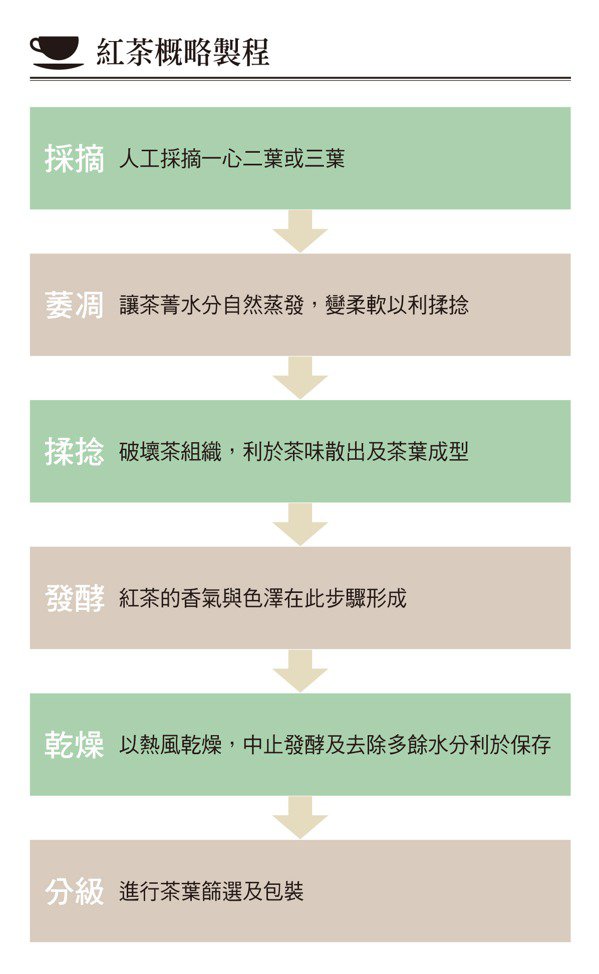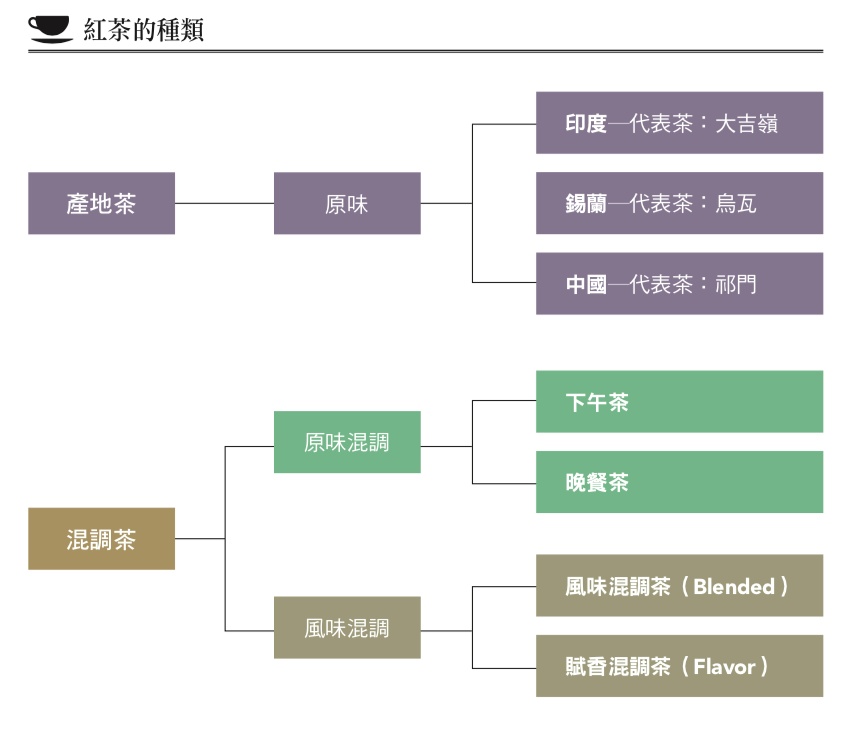What's the difference between black tea, green tea and oolong tea?
What is the difference between black tea, green tea and oolong tea? If you think of tea simply in terms of dried fruit and dried fruit, it is easy to think that different tea trees produce different kinds of tea. Black tea is made from dried black tea leaves. Is green tea made from green tea trees?
In fact, to put it simply, the biggest difference between black tea, green tea and oolong tea lies not in the variety of tea trees, but in the "process of making tea".
The raw material for making tea comes from the tea tree, and the leaves picked from the tea tree are called "tea cyanine" (also known as fresh leaves). In the process of making tea, the tea cyanine is kneaded and placed to let it "ferment" this process will have an important change to the taste of tea. with the longer the fermentation time, the mellow taste of the tea, the more obvious the aroma from grass green to sweet or fruity, so the different degree of fermentation is an important process to determine the taste of tea. In other words, after the same kind of tea is picked, the degree of fermentation can be determined according to the demand, and it can be further made into green tea, oolong tea or black tea.
"slow time of English afternoon Tea (newly updated version)" Picture / rover Culture published
Of course, in addition to fermentation, tea varieties, production environment, construction methods, and so on, little by little factors determine whether the tea is delicious or not. From the above principles, tea can be roughly divided into unfermented tea, semi-fermented tea and fully fermented tea.
◎ green tea → unfermented tea
Usually use high temperature to inhibit fermentation, is the closest to the original taste of tea, with green grass fragrance, green brown with bitter taste, slightly astringent taste is the characteristic of green tea.
◎ oolong tea → semi-fermented tea
In the process of tea fermentation, the fermentation project is blocked when half of the tea is fermented, and the tea style can be determined by controlling the degree of fermentation. It is also the most varied tea style, such as Cuiyu with a light degree of fermentation and Tieguanyin with a high degree of fermentation. Most oolong tea soups are covered by oolong tea. Most oolong tea soups have light orange tones, rich flower and fruit aromas, and a soft taste is the main reason why oolong tea is popular.
◎ black tea → fully fermented tea
Fully fermented tea, belongs to mature tea style, the appearance of dry tea is dark, the tea soup is mostly reddish brown, the honey aroma of sweet ripe fruit, mellow and sweet but not greasy, deeply loved by all countries, is also the most popular tea style.

Know the process of black tea
How is the black tea with attractive aroma made? At present, there are many kinds of production methods in the market, the most traditional black tea production process can be divided into: picking → withering → rolling → fermentation → drying → classification, a total of six stages.
1. Plucking
Most of them are made of two leaves of one heart, and the standard of picking tea leaves made of traditional black tea is to select the top buds of tea trees with one heart and two leaves, and sometimes because of the tea varieties with high content of tender buds, the situation of picking three leaves of one heart or four leaves of one heart can be seen from time to time. Fresh bud leaves rich in fragrance are usually the first choice for picking.
two。 Withering
Put the picked buds in the withering trough to make them lose water naturally, and the removal of moisture also makes the leaves soft, which is beneficial to the subsequent kneading process.
The more mellow the taste of the tea, the more obvious the aroma will change from green grass to sweet or fruity.
3. Knead and roll
Apply kneading, pressing and other forces to destroy the cells and tissues of the tea leaves, so that the tea juice overflowing from the bud leaves is attached to the tea surface, thus accelerating the oxidation.
4. Ferment
The rolled tea is placed in a high-temperature and high-humidity environment to oxidize the enzymes in the tea juice released by the tea and the air. This process is fermentation, which determines the color, aroma and taste of the tea during brewing.
Note: fermentation here refers to the chemical changes naturally produced by the combination of tea juice and air, which is slightly different from the fermentation process of natto or tofu milk with lactic acid bacteria.
5. Dry
Using hot air to dry tea at high temperature, the most important function is to stop fermentation, lock the aroma of tea, and reduce humidity to facilitate preservation.
6. Grading
The tea leaves with the same size and small leaves were screened, classified and packaged.
Important Notice :
前街咖啡 FrontStreet Coffee has moved to new addredd:
FrontStreet Coffee Address: 315,Donghua East Road,GuangZhou
Tel:020 38364473
- Prev

There are hundreds of flavors of black tea! Mix and match origin and materials to produce changeable flavor
Black tea is produced all over the world. Due to different soil, climate and other natural environmental conditions, black tea with different taste and aroma is created, plus tea from different producing areas is mixed, or dried fruit, flowers, vanilla and other materials are added. The flavor of black tea is ever-changing. The following introduces the common types of black tea: first, the tea from the place of origin is named as the name of tea, not with its name.
- Next

How to beat latte foam how to play Italian milk espresso latte coffee froth foam teaching skills
The daily mental journey of a friend who has just learned to foam is: I don't want to give up! No, stick to it. Ah, it's thick again, just give up! Don't give up, do it again! I know you will say: please take down the surveillance! As an essential part of making latte, the degree and quality of foam will affect the visual and tactile experience of a cup of latte. Why?
Related
- Beginners will see the "Coffee pull flower" guide!
- What is the difference between ice blog purified milk and ordinary milk coffee?
- Why is the Philippines the largest producer of crops in Liberia?
- For coffee extraction, should the fine powder be retained?
- How does extracted espresso fill pressed powder? How much strength does it take to press the powder?
- How to make jasmine cold extract coffee? Is the jasmine + latte good?
- Will this little toy really make the coffee taste better? How does Lily Drip affect coffee extraction?
- Will the action of slapping the filter cup also affect coffee extraction?
- What's the difference between powder-to-water ratio and powder-to-liquid ratio?
- What is the Ethiopian local species? What does it have to do with Heirloom native species?

